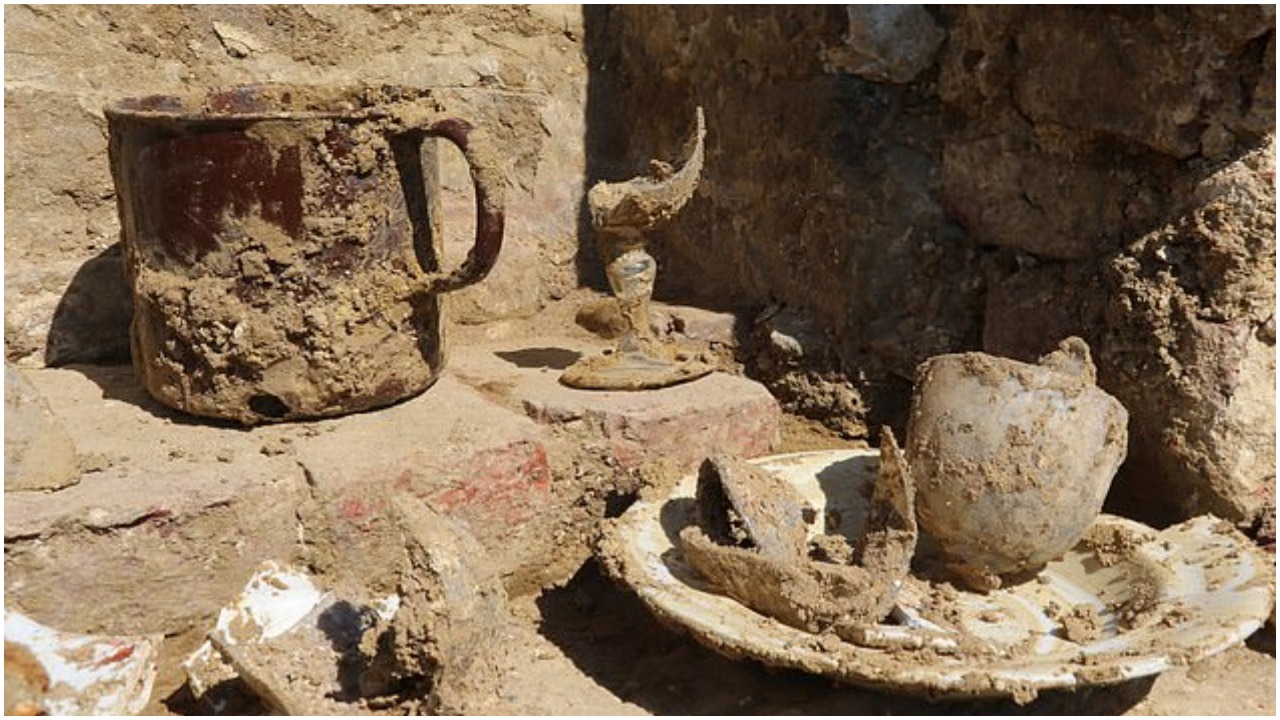Over 80 soldiers killed during WW1 received burials with full military honors Thursday 1oth October. Their remains were discovered in an archaeological dig that one archaeologist called “the First World War’s Pompeii.”
The remains of an estimated 110 soldiers and thousands of artifacts were discovered at the site which was funded through crowd funding. It is thought to be the first time that crowd funding has been used to support a wartime archaeological dig.
Known as the “Dig Hill 80” project, the WW1 site is located on a ridge outside of the Belgian village Wytschaete (also spelled as Wijtschate). British soldiers, unable to pronounce the Belgian name, referred to it as “Whitesheet.”
The German army invaded Belgium in August of 1914. The ridge where the “Dig Hill 80” project was located was a key defensive position. Many of the remains that were found were soldiers that died during the First Battle of Ypres which occurred from October to November of 1914.
Most of the recovered remains were from German soldiers who had been killed by Allied artillery fire. The dead were buried where they fell on the WWI battlefield
.@LordAshcroft visits @DigHill80 in advance for the burials of the recovered soldiers happening this week. #ww1 #history #archaeology https://t.co/3gwKfn2NqM
— Dan Morelle 🎯 (@DanMorelle) October 6, 2019
In 1917, the Allies retook the ridge during the Battle of Messines. They lost it to the Germans again the next year.
Because the position was held by both the Allies and the Germans, there are artifacts from both armies located there. The archaeological team located medals, ammunition, military issued equipment, weapons and even a perfectly preserved bottle which had at one time contained British HP sauce.
After November 1918, when the war ended, the battlefield was covered with earth and forgotten for almost one hundred years.
It only came to light after developers called an archaeological team to check the site before they built 29 new homes on it. Such investigations are required under Belgian law before building on sites that had been near the front line.
Photographs that had been taken during the war showed that the site might be a place of interest to archaeologists. A dozen trial trenches were dug which showed the existence of the remains of soldiers under the soil. At that point, archaeologists realized that they might be on to something exciting.
Today we finished the detailed work on shelter and dump.
The dump was emptied carefully and contained about 60 fuzes and 30 igniters for heavy mortars, all unused. Perfect confirmation and identification of the type of artillery that last used the position.#FWW #Archaeology pic.twitter.com/nIJ1hetyZz— Simon Verdegem (@SimonVerdegem) August 27, 2019
Once the findings were reported, the government put the proposed construction on hold so that the archaeologists could recover the remains and the artifacts. Unfortunately, estimates for the cost of the dig were placed at between £150,000 and £200,00. The team used crowd funding to raise £162,000. Hundreds of people from over 40 countries contributed to the cause.
The dig finished in July of 2018 after 60 days of digging. Five archaeologists worked with a rotating group of 50 volunteer archaeologists and almost 100 volunteers with no experience. The volunteers spent as long as a week working at the site.
“I think #FlandersFields will always carry the scar of the war, both above and underground … It will take decades to uncover everything.”
– Simon Verdegem, Archaeologist with @DigHill80#WW1 #WorldWarOne #Archaeology #remembrance pic.twitter.com/v2TtUxm4E2— Flanders Fields (@FlandersWW1) October 1, 2019
The archaeologist who led the project was motivated by a quote he had found from a German officer who had served in WWI.
The lieutenant had written that the men no longer feared dying but were afraid they would be buried in a foreign land and forgotten. That quote stuck with the archaeologist and he was determined to find all the remains they could find at the site and give those soldiers proper burials.
The experience caused him to consider the human cost of the war and would often make him sad as he would drive home from the site at the end of the day.
Another historian agreed that it was important to exhume the bodies and give them a proper burial. He considers the fact that these young men had families who never had any peace regarding the loss of their son.
What has @MilCollege been doing today? Well in a nutshell. This. Thank you @CWGC and @DigHill80 for such an amazing event. https://t.co/drRISEv1mC
— Mildenhall Hums Dept (@MilHums) October 10, 2019
Fifteen minutes into the first day, the team located a skull. By the end of the second week they had found a mass grave with 25 Germans in it and another with 10-15 Germans. In the end they found 110 individuals at the site.
Thousands of photographs and drawings were made at the site to indicate the precise location of every bone or artifact they found.
Another Article From Us: Could Hold 32 Million Gallons – Scotland’s Secret WW2 Fuel Depot
The bones were turned over to the authorities who made every effort to positively identify the soldiers. There were 20 soldiers they were not able to identify by any means. The remains consisted of men as young as 16 to as old as their 40s.
